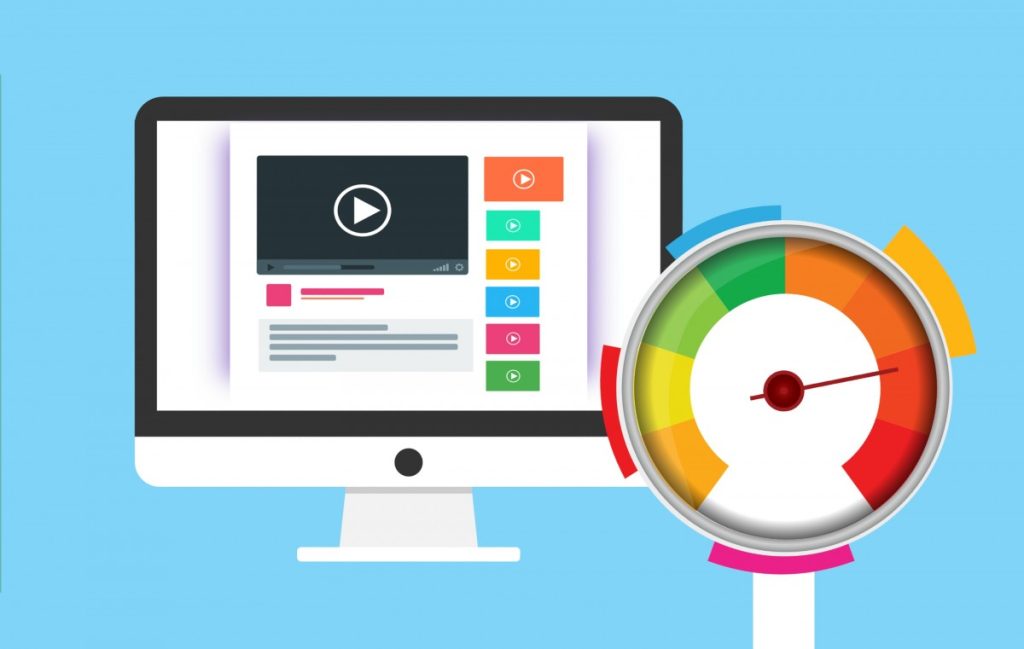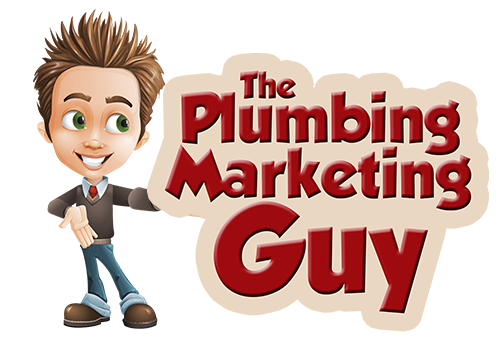Why Site Speed Matters: Boost Your Plumbing Business’S Online Presence With Faster Load Times
January 13, 2025Having a fast-loading website is essential for your plumbing business, as it greatly impacts your online visibility, local SEO rankings, and customer conversion rates. A site that loads in under three seconds enhances user experience, reducing bounce rates and increasing engagement. Faster sites rank higher in search results, which is important for local SEO, especially since over 50% of local searches are conducted on mobile devices. Quick load times also boost conversion rates, with every additional second leading to a 7% decrease in conversions. By optimizing your site speed, you can improve customer acquisition, retention, and ultimately drive business growth, so understanding these strategies can be a game-changer for your plumbing business.

Introduction
When you’re running a plumbing business, site speed is essential for boosting your online presence. A slow-loading website can drive potential customers away, as they are unlikely to wait around for a page to load. By optimizing your site speed, you can improve user experience, enhance search engine rankings, and increase the chances of converting visitors into customers.
Site Speed and SEO
Ensuring your plumbing website loads quickly is essential for both user experience and search engine rankings. A slow-loading website can drive potential customers away, leading to lower engagement and conversion rates. Google, in particular, uses page load speed as a ranking factor, meaning faster websites are more likely to appear higher in search results.
To optimize your site speed, start by compressing images and enabling browser caching. This reduces the time it takes for your website to load by storing static files like HTML documents, media images, and JavaScript and CSS files for faster access. Additionally, remove any unnecessary plugins, as each plugin consumes resources and can slow down your site.
Improving your website speed also enhances your local SEO. When your site loads quickly, users are more likely to stay and explore, which can lead to higher local search visibility. This is vital for plumbing businesses, as local searches like “plumber near me” or “plumber {city}” are highly frequent and can drive significant traffic to your site.
Google ranking factors (Core Web Vitals, mobile-first indexing)
To maintain a competitive edge in the digital landscape, it’s essential for plumbing businesses to understand and adhere to Google’s ranking factors, particularly Core Web Vitals and mobile-first indexing.
Core Web Vitals are significant because they measure the user experience of your website, focusing on aspects like loading speed, interactivity, and visual stability. Each second of delay in page loading can reduce conversions by up to 20%, which is a considerable loss for any business. Optimizing for Core Web Vitals guarantees your site is fast, responsive, and stable, enhancing user engagement and reducing bounce rates. This not only improves your search rankings but also affects your ad rank and Quality Score, making your PPC efforts more efficient.
Mobile-first indexing is another key factor, as Google now prioritizes the mobile version of your website for ranking and indexing. Confirming your plumbing website is mobile-friendly is no longer optional; it’s a necessity. This means your site should be optimized for mobile devices, with easy navigation, fast load times, and content that is accessible and readable on smaller screens. By adhering to these guidelines, you can improve your website’s visibility, attract more local customers, and drive more service calls to your business.
User engagement and conversion rates
Optimizing your plumbing website’s speed is essential for enhancing user engagement and boosting conversion rates. When your site loads quickly, you create a better user experience, which is fundamental for keeping visitors engaged and encouraging them to take the desired actions.
If your page is slow, expect decreased user engagement and increased customer frustration. Statistics show that websites loading in one second have three times higher conversions than those loading in five seconds, and five times higher than those loading in 10 seconds.
A slower site can lead to a higher bounce rate; pages that load in three seconds or more have a 32% higher bounce rate compared to those that load in one second. This means potential customers are leaving your site without even exploring your services, resulting in lost conversions.
To improve your conversion rates, aim for load times between 1-4 seconds. For example, a site loading in one second can achieve an average conversion rate of almost 40%, which drops substantially to around 29% at a 3-second load time.
Best Practices for Optimizing Site Speed
Optimizing your plumbing website’s speed is crucial for maintaining a competitive edge and enhancing user experience. Here are some best practices to help you achieve faster load times:
Prioritize Above-The-Fold Content: Ascertain that the critical content users see first loads quickly. This improves the initial user experience and reduces bounce rates.
Use a Content Delivery Network (CDN): A CDN distributes your site’s content across multiple geographical locations, reducing the distance between users and your website’s resources, thereby speeding up load times.
Optimize Images: Compress and resize images to reduce their file size. Prefer formats like .svg and .webp over .jpeg and .png. This considerably reduces loading times without compromising image quality.
Minify and Compress Files: Remove unnecessary characters, line breaks, and spaces from CSS, JavaScript, and HTML files. Use compression techniques like Gzip to reduce file sizes.
Leverage Asynchronous Loading: Load CSS and JavaScript files asynchronously to prevent them from blocking the initial page load. This allows multiple files to load simultaneously, speeding up your site.
Reduce Redirects and API Calls: Minimize redirects and unnecessary API calls, as each one triggers additional HTTP requests that slow down your page load speed.
Enable Caching: Use browser caching to store webpage resource files locally, making your site faster for repeat visitors.
Minimize HTTP requests
When it comes to enhancing the speed of your plumbing website, minimizing HTTP requests is a critical step. Each HTTP request your site makes can slow down load times, impacting user experience and search engine rankings. Here’s how you can reduce these requests:
Combine your files to lessen the number of requests. Instead of having multiple CSS and JavaScript files, merge them into single files each. This approach considerably reduces the number of requests, speeding up your site.
Use CSS sprites to consolidate multiple images into a single image file. This technique is particularly useful for icons and small images, reducing the number of image requests.
Minify your CSS, JavaScript, and HTML files by removing unnecessary characters, spaces, and comments. This reduces file sizes and, subsequently, the load time. Combining minified files further enhances this effect.
Implement lazy loading for images and other assets that are not immediately visible. This technique delays loading until the user scrolls to the respective section, reducing unnecessary HTTP requests.
Image optimization
To guarantee your plumbing website loads swiftly and enhances user experience, image optimization is an essential step. Large, unoptimized images can greatly slow down your site, leading to higher bounce rates and lower search engine rankings. Here’s how you can optimize your images:
Start by choosing the right file type for your images. For example, JPEG is ideal for photographs, while PNG is better for graphics and logos. Resize your images before uploading them to your site; larger images take longer to load, even if they are displayed in a smaller size on the page.
Compress your images to reduce file size without compromising quality. Tools like Imagify can automate this process, converting your images to formats like WebP and AVIF, which offer better compression rates.
Additionally, use lazy loading and the “blur up” technique to load lower-quality images first, improving initial page load times. Make sure that all images have alternative text that includes your keywords, which also helps with SEO.
Browser caching and code compression
Browser caching and code compression are essential steps in enhancing your plumbing website’s speed and overall user experience. By enabling browser caching, you instruct the user’s browser to store static files such as HTML documents, images, JavaScript, and CSS files. This means that when a visitor returns to your site, these files are accessed from their device instead of your server, considerably reducing load times and enhancing the user experience.
To implement browser caching, you can set cache headers in your website’s configuration. For Apache servers, this can be done by adding a snippet to the ‘.htaccess’ file, specifying the access time and file types to be cached. This guarantees that frequently used files are not re-downloaded every time a user visits your site, making subsequent visits much faster.
Code compression is another critical aspect. Minifying your CSS, JavaScript, and HTML files by removing unnecessary characters like white spaces, line breaks, and comments reduces their file size. Combining multiple files into one also minimizes the number of HTTP requests, further speeding up your site’s load time. Tools like MinifyCSS, UglifyJS, and HTMLMinifier can help automate this process, guaranteeing your website loads quickly and efficiently. By leveraging these techniques, you can improve your site’s performance, boost customer engagement, and increase conversions.
Use of CDNs
Using a Content Delivery Network (CDN) can greatly enhance the speed and performance of your plumbing website. By caching your content on servers located closer to your users, a CDN reduces the distance between the content and the user, resulting in faster page load times. This is vital for your plumbing business, as slower load times can lead to higher bounce rates and lower customer engagement. With a CDN, you can deliver high-performance website content quickly, including HTML code, image files, dynamic content, and JavaScript, ensuring that your website loads swiftly regardless of the user’s location.
A faster website not only improves user experience but also has a positive impact on your SEO. Google considers page speed a key factor in ranking websites, so optimizing your site speed with a CDN can indirectly boost your search engine optimization. Additionally, a CDN helps distribute the load on your server, reducing the strain and the need for frequent upgrades. This combination of improved speed, enhanced user experience, and better server efficiency makes using a CDN an essential strategy for growing your online presence and attracting more customers to your plumbing business.
Mobile optimization
Optimizing your plumbing website for mobile devices is just as important as guaranteeing it loads quickly, especially since a significant portion of your potential customers are likely searching for plumbing services on their smartphones. With over 50% of all web traffic coming from mobile devices, having a mobile-friendly website is no longer optional, but a necessity.
When a customer is dealing with a plumbing emergency, they are not sitting at a desk; they are on their phone, searching for immediate help. A mobile-optimized website guarantees that your site loads quickly, has a click-to-call button, and features simple navigation. This design should prioritize essential information such as services offered, service areas, and contact details. Guaranteeing your site is responsive, meaning it adjusts to fit the screen size of any device, is vital for both user experience and search engine rankings[1][3][5].
Google’s mobile-first indexing system means that your mobile website’s performance is now more critical than your desktop version for search rankings. A well-optimized mobile site not only improves your SEO but also enhances customer engagement and conversion rates. By making it easy for users to find and contact you, you can drive more business and stay ahead of your competitors.
